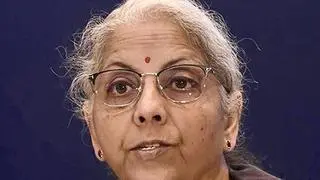The rapid growth of India and China will overshadow the development of their Asian neighbours in the coming years, with the purchasing power of their populations increasing to almost match consumers in the US and EU combined, a senior Doha Bank official has said.
India will become one of the most sustainable economies in the future and by 2030, Asia’s economy — mainly encompassing India and China — will be larger than that of the US and European Union combined, Mr R. Seetharaman, Chief Executive Officer of Doha Bank in Qatar, said.
Addressing the Indian American Association here, he said the world has seen India and China emerging as the main contributors to the recovery of the global economy from a crisis situation.
He said the International Monetary Fund (IMF) projects the world growth at 4.4 per cent for 2011 with advanced economies projected to experience around 2.5 per cent growth while emerging and developing economies — including the West Asian region — projected to grow at around 6.5 per cent.
The G-20 has predicted that India will be one of the 10 largest members in the IMF and its rank in the IMF will improve to eighth position from the current 11th in terms of quota.
India-US trade increased by 30 per cent to $49 billion in 2010 over 2009. Deals worth $10 billion signed by US companies with India will create over 50,000 jobs in the US. This made the UN estimate that India would contribute fully a quarter of the additions to the world’s workforce over the next 10 years, he said.
India will persevere with implementing financial sector reforms to support rapid and inclusive growth in the real economy and also to increase systemic stability in the financial sector.
Some of the major sectors in India that have immense potential are infrastructure, agriculture and food processing, information technology and education.
Investment in physical infrastructure is expected go up to $1 trillion during the 12th Five-Year plan from 2012 to 2017. In India, the share of private structure in infrastructure investment has moved up from 2.2 per cent of the GDP in 2007-08 to 2.6 per cent of the GDP in 2009-10 and is expected to touch 3.3 per cent of GDP by 2011-12.
He said discussions are also underway to further liberalise the Foreign Direct Investment (FDI) policy.
Mr Seetharaman was in New York as part of a Qatari delegation to participate in the two-day Business & Investment in Qatar Forum on April 6 and 7 at the Waldorf Astoria Hotel, to be addressed by the Qatar Prime Minister, Qatar Sheikh Hamad bin Jassim bin Jabr Al-Thani, and the Exxon Mobil Corporation Chairman & CEO, Mr Rex Tillerson.
Economic Advisor in The Amiri Diwan, Ibrahim Al Ibrahim; Executive Board Member, Qatar Investment Authority, Qatar Dr Hussain Al Abdullah; and Executive Chairman, Qatar Science and Technology Park, Dr Tidu Maini, were some of the dignitaries who spoke at the conference attended by over 600 top international and Arab bankers, economists and business professionals from the US and the Gulf region.







Comments
Comments have to be in English, and in full sentences. They cannot be abusive or personal. Please abide by our community guidelines for posting your comments.
We have migrated to a new commenting platform. If you are already a registered user of TheHindu Businessline and logged in, you may continue to engage with our articles. If you do not have an account please register and login to post comments. Users can access their older comments by logging into their accounts on Vuukle.